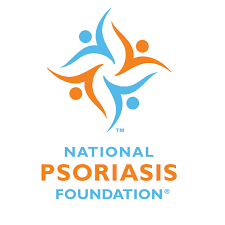Summertime leads to lots of skincare challenges, but for people with psoriasis skincare challenges are a year-round effort.
August brings attention to this skin condition with Psoriasis Action Month and Psoriasis Awareness Month.
According to the National Psoriasis Foundation (NPF), psoriasis is an “immune-mediated disease (a disease with an unclear cause that is characterized by inflammation caused by dysfunction of the immune system) that causes inflammation in the body.” The American Academy of Dermatology Association (AAD) explains that psoriasis is the body’s too-rapid production of skin cells, which cause the cells to pile up and form itchy and painful patches.
For people who have psoriasis, the disease is hardly simple. It causes extreme itching and discomfort physically, but it also brings emotional struggles as the patches can be large and red and will appear almost anywhere on the body.
Psoriasis isn’t contagious so people can’t catch it; however most people can’t tell what is causing such an inflamed reaction and so may assume they will contract a similar rash if they get too close. Covering up the patches helps hide them, but it doesn’t soothe the emotional toll of having a very visible skin condition.
According to the NPF, instead of the typical 30-day cycle in which skin cells will develop and shed, those with psoriasis can have that happen in 3 or 4 days. The rapid buildup of cells looks different on each person (and can vary depending on the type of psoriasis a person has) and can come and go in severity. Like many other autoimmune-type diseases, stress, other infections, or even a skin injury can trigger a flare up of symptoms. Cold, dry weather can worsen symptoms as can too much drinking or smoking.
Because this condition isn’t entirely localized, like a poison ivy rash would be, the systems involved in psoriasis can also lead to other conditions such as psoriatic arthritis, which may affect up to a third of sufferers.
There is no cure for psoriasis, but there are many treatments that people can try. If any of your patients have the condition, encourage them to try as many therapies are they are able to. Each kind of therapy will have a different outcome for each person, so what worked for one might not work for another. Currently, psoriasis treatment therapies may feature light therapy or topical creams or lotions.
More severe cases of psoriasis may involve more pervasive treatments that could include oral medications or infusion therapies that treat a wider range of body systems. And whether someone has a mild case or a more severe case of psoriasis, additional alternative therapies that work to prevent a flare up, reduce inflammation in the body, or help focus on pain management techniques are often useful.
If any of your patients have psoriasis, offer support through resources and compassion throughout the year. If you don’t know much about this condition, do some investigating in your daily nursing approach so you’ll understand it and can help educate others.
- Is the FNP Program Right for You? - April 24, 2024
- WOC Nurses Week Highlights Specialty - April 16, 2024
- Honoring Radiology Nurses Day on April 12 - April 12, 2024



